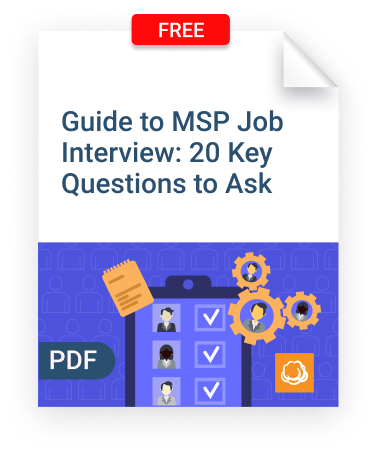If everything’s going according to plan, you’re landing more clients, generating additional MRR and scaling your organization, but as your business transforms into a powerhouse, your MSP organizational structure undergoes significant changes, and if you’re not careful with the framework, you can find yourself in a bit of a dilemma.
Typically, when you’re first starting out, your organization is small, and your resources are limited. You don’t have many employees (if you have any). While there are many roles, they’re filled by the few. Many MSPs operate this way until they begin scaling and require more hands to deliver results.
Many MSPs struggle with hiring additional employees for many reasons. For the most part, they’re unfamiliar with the hiring process and unsure of what to look for in candidates when interviewing them. At some point, MSPs realize their current workloads are unsustainable and move toward adopting new hiring policies designed to employ the right candidates for the number of open positions within their organizations, but what they often forget to consider is the structure around them.
As you scale, the MSP organizational structure becomes increasingly essential to your success.
Review employee workloads before determining how many employees to hire
Before hiring anybody, you must first review the workloads of your employees. Where do your team members need help the most? Are some of your employees more bogged down than others? Ideally, everybody within your organization should be working at reasonable paces to avoid burnout.
Further reading Think You’re Ready to Hire Your First Employee?
It's okay to hire when employee workloads become unbearable, but be careful of going overboard. Hiring too many people can turn into a costly problem. You don’t want an office filled with employees sitting around, looking for something to do — that’s not a productive use of their time or your money.
Pay close attention to roles when scaling your business. Review your org chart to determine where you need the most help, and while you’re doing that, evaluate your MSP organizational structure for holes.
Transform your organizational chart as your scale
As you scale, your MSP organizational structure changes — usually for the better. Many MSPs start off with horizontal organizational structures, meaning there are little to no middle managers. Eventually, the need for middle management becomes evident, and MSPs find themselves hiring yet again.
For example, when your business scales to a point where you have several technicians, it’s time to hire a service manager to ensure your technicians are responding to tickets and resolving issues.
Other areas of your business where middle managers may be necessary include sales, marketing, and administration, but don’t scale too fast too soon. Only hire what’s needed for your business to continue to thrive in the environment it’s operating in. You don’t want to deplete your resources and overexert your people, which is why it’s essential to construct a strong business framework initially.
Further reading Hiring New Employees: 6 Essential Steps for MSPs
Become familiar with business systems
Sometimes your overall business needs a little bit of structure. If that’s the case, there are business systems you can implement to strengthen your core business and ensure operations run smoothly.
One system to consider is the EOS Model, which can be applied to SMBs and larger organizations. According to this model, there are six components to any business: vision, data, process, traction, issues, and people. By focusing on these aspects of your business, the architects behind this model believe you can take your business to another level by enabling you to tackle the root causes of issues within your organization instead of treating only the symptoms.
Scaling a business isn’t easy, but when you consider your MSP organizational structure and how your employees contribute to its growth, you ensure a smooth transformation to an MSP powerhouse.








